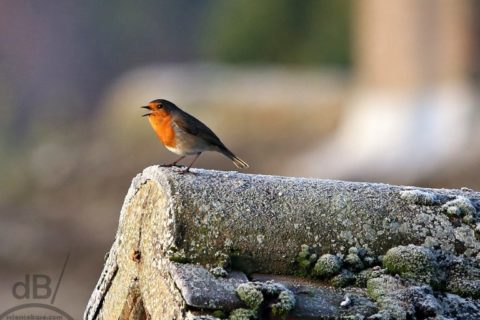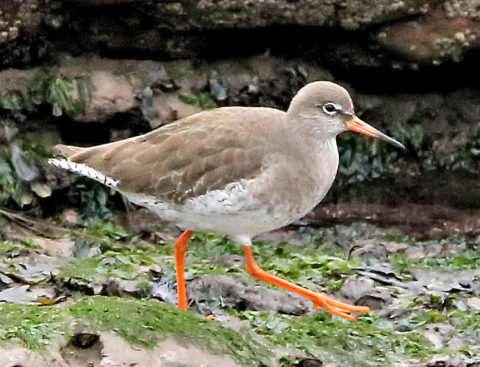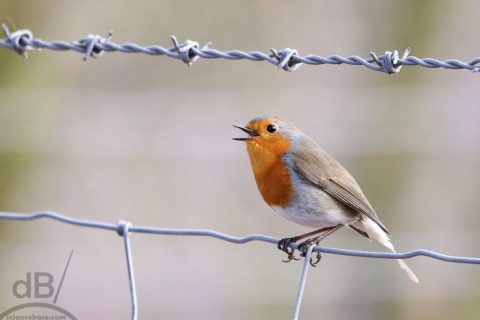The brightly coloured breast of the robin (Erithacus rubecula) is familiar to Brits particularly at Christmas, although both male and female birds have their rusty pectoral plumage throughout the year. Both male and female sing throughout the year although they have an autumnal territorial call and a spring mating call. They are, according to the polls, the most popular species in the UK, despite looking cute they are aggressively territorial and quick to drive away or even attack intruders on their patch.
At one time European robins were classified scientifically as Turdus, thrushes, but they don’t really resemble any of the thrush family (thrush, blackbird, redwing etc) although their chicks are speckled. These days robins are classed as Old World flycatchers. Erithacus is from the Greek for an unknown bird while rubecula is from the Latin for red (hence obviously, ruby). Of course, their red breast is anything but red more “Heinz Cream of Tomato soup spilled down your white teeshirt” if anything.
Indeed, the distinctive breast of both sexes in this species was called redbreast simply because sixteenth-century English birdwatchers didn’t have a word for the colour orange, that had arrived on these shores circa 1300 with the eponymous fruit, but wasn’t used for the hue until later.
 Robins definitely have a place of affection in our hearts, viz all that Christmas imagery, although I’m not entirely sure which Robin is being sung about in the song “Rockin’ Robin” by Leon Rene (aka Jimmie Thomas) and made famous by Bobby Day in 1958 and then again by Michael Jackson in 1972). The American robin (Turdus migratorius) also has a colourful, orange, breast, but is very much a thrush, as you can see in this photo.
Robins definitely have a place of affection in our hearts, viz all that Christmas imagery, although I’m not entirely sure which Robin is being sung about in the song “Rockin’ Robin” by Leon Rene (aka Jimmie Thomas) and made famous by Bobby Day in 1958 and then again by Michael Jackson in 1972). The American robin (Turdus migratorius) also has a colourful, orange, breast, but is very much a thrush, as you can see in this photo.
Red admiral* butterflies are black and white with orange regions on their wings, definitely not red. Similarly, redheads (people with orange) hair are thus called and as to the term “carrot top” that has to be even more modern because carrots used to be purple.
Etymolonline has the skinny on the origins of orange:
ca. 1300, of the fruit, from Old French orange, orenge (12c., Modern French orange), from Medieval Latin pomum de orenge, from Italian arancia, originally narancia (Venetian naranza), alteration of Arabic naranj, from Persian narang, from Sanskrit naranga-s “orange tree,” of uncertain origin. Not used as a color word until 1540s.
UPDATE: The redshank (Tringa totanus) similar problem with the name.

I should perhaps update this old blog post to mention why so many things in nature that are obviously pink are known as red somethings…spoiler alert, it’s because we didn’t have the word for pink, the colour, until they’d all acquired their red names. For example, Red Campion.
The colour pink almost certainly comes from the common name for Dianthus, carnations, which are that colour. Caucasian flesh coloured in fact, hence the name carnation. Carnis, being Latin for flesh as in carnivore and made flesh, incarnate.
There is some argument about the etymology of the Red Admiral, not the red part, but the admiral. It was most likely that it’s not a nautical allusion, but a bastardisation of the word admirable. There is evidence that it was originally called a Red Admirable. Author and entomologist Vladimir Nabokov insisted that this was true, arguing vehemently against those who said it was a nautical allusion. He has recently been vindicated according to Peter Marren, author of Emperors, Admirals, and Chimney Sweepers.
